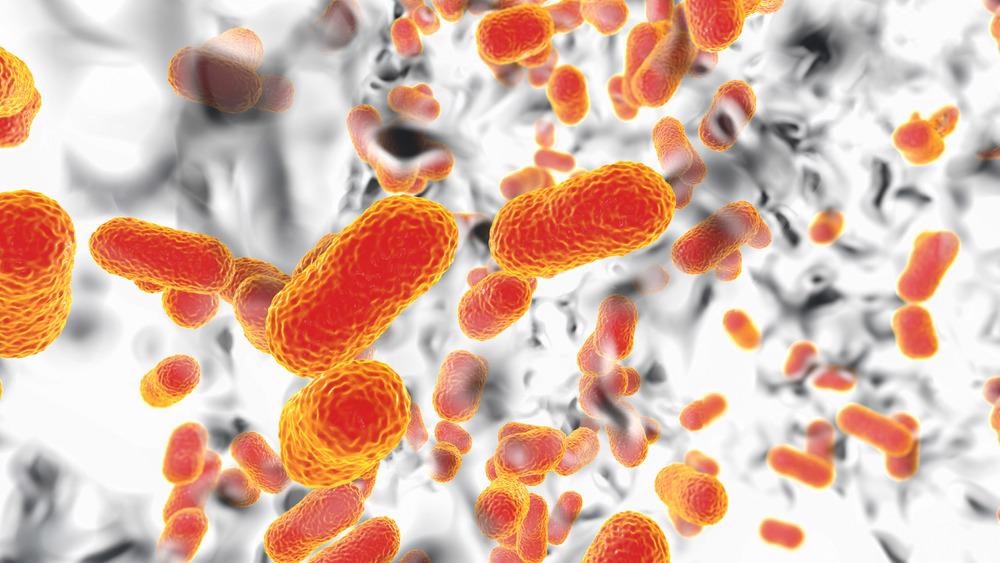The challenge of multidrug resistance has rapidly increased over recent decades, and the accelerating emergence of multidrug-resistant (MDR) bacteria poses a serious threat to health. Nanotechnology is also demanding more attention as a possible solution to the problem of MDR bacteria.

Image Credit: Kateryna Kon/Shutterstock.com
There has been an increasing rate of infections caused by MDR, and morbidity and mortality have risen alongside this. MDR bacteria are considered to be one of the most important present threats to public health; tackling this bacterial resistance, therefore, has become a priority.
The field of nanotechnology has emerged as one of the fasting growing sectors of modern science. It has already made significant breakthroughs in numerous areas of science, including medicine, renewable energy, environmental science, transportation, IT, security, and many more.
The Unique Characteristics of Nanoparticles
Nanoparticles are a unique set of molecules that are defined by their small size – with at least one dimension on the scale of the nanometer (1–100 nm). This small size gives nanoparticles exceptional physical and chemical properties that differ from those of their bulk material counterparts. These unique properties have piqued the interest of scientists over recent years, leading to an explosion of scientific studies exploring how these properties can be exploited to solve some of science's most pressing issues.
The vast and diverse set of properties offered by nanoparticles have made them an important vector for drugs that target disease-causing pathogens. Their nano-size combined with relatively large surface area gives them distinctive functionality in drug delivery. Nanoparticles offer a new avenue to explore in terms of developing novel treatments that can tackle infections caused by MDR strains.
The Therapeutic Potential of Nanoparticles
Studies have shown that poor membrane transport acts as a barrier to achieving higher potencies of traditional antibiotics. However, drugs loaded with nanoparticles gain access through the membrane via endocytosis; thus, nanoparticles enhance the potency of these drugs.
In addition, membrane penetration can also be achieved via alternative routes with the help of nanoparticles. Gold nanoparticles, for example, when added to protein-based drugs, can facilitate membrane penetration through their interactions with surface lipids.
The therapeutic potential of nanoparticles is boosted further enhanced by the physical protection they provide against mechanisms of bacterial resistance. Additionally, the potential to add multiple drug combinations into nanoparticles offers an incredibly complex mechanism of action, which is unlikely to lead to bacteria developing drug resistance.
The Antibacterial Activity of Nanoparticles
Nanoparticles do not treat infection via the same mechanisms as traditional antibiotic drugs. There are many mechanisms by which nanoparticles can exert their antibacterial activity. These include direct interaction with the bacterium's cell wall, inhibition of biofilm formation, triggering both the innate and adaptive immune system responses of the host, generation of reactive oxygen species, and producing intracellular effects (such as interactions with DNA).
As a result, the action of nanoparticle-delivered drugs can be extreme in their impact on MDR bacteria and may offer a route to tackling infections that have become increasingly harder to treat due to rising multidrug resistance.
The Global Rise of Infections due to Multidrug Resistance
Each year, over 2.8 million cases of antibiotic-resistant infections occur in the US alone. According to the CDC's 2019 report, more than 35,000 people die annually due to these types of infections. There is a huge concern that the bacterium Clostridioides difficile will soon be added to the list of antibiotic-resistant infections, pushing annual cases of antibiotic-resistant infections over the three million mark, bringing total deaths to 48,000 each year.
Already, numerous infections caused by bacteria and fungi that are generally easy to treat are becoming more resistant to antibiotics. This resistance is leading to serious problems. If an infection is resistant even to the first-line antibiotic, the need to turn to second-line treatments can increase the chance of a patient suffering harmful side effects. This risk increases as further lines of treatment are used. Additionally, the use of multiple different medicines following the failure of initial treatment prolongs recovery times and time spent in hospital.
Many medical advances are contingent on our ability to effectively fight infections. Cancer therapies, the treatment of chronic diseases (such as asthma, diabetes, rheumatoid arthritis), organ transplants, and joint replacement all rely on antibiotics to ensure that opportunistic infections do not take hold.
There is a growing list of common infections that are becoming more challenging to treat as the antibiotics used against them become less and less effective. Conditions such as pneumonia, tuberculosis, gonorrhea, and salmonellosis are those that are already causing concern.
Nanotechnology offers a way for us to continue to effectively treat these infections and avoid a global public health emergency.
References and Further Reading
2020. Antibiotic resistance [online]. World Health Organization. Available at: https://www.who.int/news-room/fact-sheets/detail/antibiotic-resistance
2021. About Antibiotic Resistance [online]. Centers for Disease Control and Prevention. Available at: https://www.cdc.gov/drugresistance/about.html
Baptista, P., McCusker, M., Carvalho, A., Ferreira, D., Mohan, N., Martins, M. and Fernandes, A., 2018. Nano-Strategies to Fight Multidrug Resistant Bacteria—"A Battle of the Titans". Frontiers in Microbiology, 9. https://www.frontiersin.org/articles/10.3389/fmicb.2018.01441/full#h3
van Duin, D. and Paterson, D., 2016. Multidrug-Resistant Bacteria in the Community. Infectious Disease Clinics of North America, 30(2), pp.377-390. https://www.ncbi.nlm.nih.gov/pmc/articles/PMC5314345/
Yang, X., Ye, W., Qi, Y., Ying, Y. and Xia, Z., 2021. Overcoming Multidrug Resistance in Bacteria Through Antibiotics Delivery in Surface-Engineered Nano-Cargos: Recent Developments for Future Nano-Antibiotics. Frontiers in Bioengineering and Biotechnology, 9. https://www.frontiersin.org/articles/10.3389/fbioe.2021.696514/full
Zhang, C., Zhou, X., Zhang, H., Han, X., Li, B., Yang, R. and Zhou, X., 2022. Recent Progress of Novel Nanotechnology Challenging the Multidrug Resistance of Cancer. Frontiers in Pharmacology, 13. https://www.frontiersin.org/articles/10.3389/fphar.2022.776895/full
Disclaimer: The views expressed here are those of the author expressed in their private capacity and do not necessarily represent the views of AZoM.com Limited T/A AZoNetwork the owner and operator of this website. This disclaimer forms part of the Terms and conditions of use of this website.